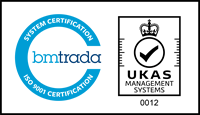Posted on: Wednesday June 05, 2019

What does ‘digital-first’ mean in today’s world?
Today’s employees are tech savvy and time poor. They are bombarded daily by brands and as such have grown to be more discerning than ever before – something which has dramatically affected the way that they want to be communicated with across all aspects of their life.
These changing preferences aren’t something that employers can afford to ignore, and over the past few years many have looked to their employees’ personal lives to inform their communications approach. This generally means easy and relevant content and timely delivery, all of which should align with their lifestyles, values and interests.
This shift is happening and disrupting the comms status quo in the workplace, which includes posters in staff rooms, intranets that don’t get used, multiple systems that require different log ins, self-service forms and email requests. It would be right to assume that moving this to a truly digital-first approach requires a significant shift in mentality, not to mention investment in new technologies and evaluation methods - each of which come with their own challenges.
Why move to a digital first approach?
Understanding and improving the employee experience is critical for companies operating in a highly competitive global economy, and providing an engaging experience is a key component for attracting and retaining skilled employees.
A strong employee experience also drives a strong customer experience: an employee who feels valued and recognised will be happier and more engaged; more engaged employees tend to be more productive and will go the extra mile for customers.
So how can businesses implement a digital first strategy?
Communication
When considering how to embed an employee communications strategy, there are a number of different considerations that can provide a head start in supporting uptake from the beginning. Firstly, not all employees have corporate email addresses. Of those who do, the majority receive more emails than they can get through, which implies that email probably isn’t the right channel to prioritise for employee comms. Instead, it is worth looking at a mobile-first solution, which although designed for mobile will also work on desktop and tablet. There is an obvious issue with this - not all employees have a work mobile phone, however, this can be easily overcome by using an app. An app is a solution which overcomes a number of issues: it can be used by employees on both personal or corporate devices, or via a browser if needs be, at a time of their choosing, thus eliminating any access problems caused by remote-working or shift patterns. This is where push notifications come in; these enable employers to use what they already know about their employees to best time their communications.
By using an app, the business will ultimately be competing for the employee’s attention of ‘screen space’; including consumer apps like Instagram, Facebook and Twitter. So ensuring the employee digital experience is ‘consumer-grade’ becomes even more important.
Engagement
With employee engagement, the key is to focus on adoption rather than usage alone. Once attention is shifted to the former, the latter will follow. This can be done by focusing on the habits and behaviours you want to drive or encourage. This may be wanting employees to log in to view their e-payslips or view their rota online rather than paper copies. Whatever the objective, focus on the user journey and ensure that this is as good as it can be, then employ targeted communications to encourage usage. This can be backed up by broader communications across channels such as LinkedIn and Facebook, which are quick and easy to deploy without the need for outside support. Not only does this multichannel approach give employees a choice of how they receive information and interact with their employer, it also promotes better responses and uptake.
For example, at large businesses, employees must often navigate and master a number of systems and applications to either do their job properly or to access internal information and benefits. Those businesses that prioritise the user journey should take inspiration from brands such as Facebook, Google and Amazon, which despite running off numerous back-end systems only show the user the sleek, easy-to-use, single point of access interface. By identifying this as an issue, and working to integrate all systems and applications through a single aggregation point like an app or website, the user journey and experience can be massively improved – Personal Group’s Hapi app is a great example of this.
The importance of focusing on the digital user experience is even more evident when onboarding new employees – just like with human interactions, first digital impressions count too. When dealing with internal employee systems, an employee’s initial opinion on how well the company’s systems work and the ease of access can be a proxy for how well organised and structured the organisation is.
Benefits
Employee benefits are arguably the most important component of driving digital usage is the offering it is built upon, and one of the main stumbling blocks businesses encounter going through the process is ensuring that the benefits on offer are relevant and worthwhile for employees.
A great way to maximise chances of subsequent usage is to utilise the insights available to determine what the right offering is for your employees. This might include analysis of the different employee demographics, employee surveys or even just anecdotal conversations. Once you have a good idea of employees’ priorities and the best benefits to offer, the next stage is to determine how the business is best able to provide these valuable benefits in the most consistent and effective way.
At this point, it is worth taking into account the average life stage of your workforce and where they are likely to spend the most money each month. For example, offering short-term discounts at youth retailers is unlikely to have the desired effect of adding value to employees’ lives if the majority of colleagues are between the ages of 35 and 50, have children to provide for, and are on the National Living Wage. In this instance, offering an ‘always on’ long-term discount at a supermarket retailer may be the most impactful.
Good accessibility is just as important as good benefits – the easier things are to access, the more they’re likely to be used, creating more value for employees and driving engagement up. But the standards are high: employees will expect the same smooth user journey from their employer as they do when ordering clothes online or doing their online shop. With this in mind, choice of benefits platform becomes a key factor in the programme’s success. Perhaps unsurprisingly, an app is the best option. Easily accessible, it acts as a single aggregation point which requires just a single sign-on and can be used wherever and whenever is convenient.
All of these considerations laid out above are easily implemented; the important thing to note is that by leveraging existing data and intelligence, uptake can be maximised in a few simple steps. The key is to offer an integrated employee experience solution, and the best platform for doing so now is an app; it transcends shift patterns, geography, time zones and personal equipment. The Hapi app can do just that. It enables HR professionals to communicate directly with colleagues in a way that they’re used to and have come to expect. It enables those in control to leverage existing data to create a compelling offering. In addition, it only has one single sign in and can ‘plug in’ if needed with existing benefits or the company’s intranet to create one point of access. By doing so, HR teams can increase adoption and uptake, and in the long-term, increase retention, productivity and employee happiness.
To find out more about how Personal Group can help support your employee wellbeing strategy, contact us, call 01908 605000 or email letschat@personalgroup.com.
Cost vs Value – What Really Matters in Health Benefits?
When it comes to creating employee health benefits, there’s always a tug-of-war between keeping costs low and focusing on the actual value those benefits bring.
Posted on: 11 April 2025 by Andrew Walker, New Business Development Director
Top Tips to Improve a Misfiring Recognition Strategy
Whether you’re a professional footballer, engineer or care worker, happiness at work relies on feeling valued, appreciated and respected.
Posted on: 28 March 2025 by Andrew Walker, New Business Development Director
Brace Yourselves: Reward Storm Incoming
In even the most optimistic assessment of the current situation, it is hard to foresee a situation where a substantial portion of workers are not left underwhelmed by their pay offers in 2025.
Posted on: 13 March 2025






